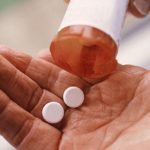
People with autism are over three times more likely than their peers without the developmental disorder to experience self-injury, suicidal ideation, suicide attempt, or death by suicide, new research shows. “In general, I think there needs to be more support for individuals with autism. And this shows that there are life-threatening consequences in terms of suicide and self-harm,” said Alycia Halladay, chief science officer for the Autism Science Foundation. She was not involved in the study. The researchers agreed. “The presence of psychiatric illnesses substantially accounts for these increased risks,” said lead study author Dr. Meng-Chuan Lai, staff psychiatrist and clinician scientist with the Child and Youth Mental Health Collaborative at the Centre for Addiction and Mental Health (CAMH) at the University of Toronto. “We know that many self-harm and suicide-related events could be prevented when people have access to tailored mental health supports and services, and this is crucial for autistic people,” he said in a CAMH news release. Megan Pilatzke is an advocate and a woman living with autism. ”Autistic people are continually forced to mask and hide who we are to accommodate a world that generally does not accept our traits,” Pilatzke said in the release. “I want people to understand that autistic people are struggling because our needs are just not being met throughout society.” Broken down by gender, females with… read on > read on >


















